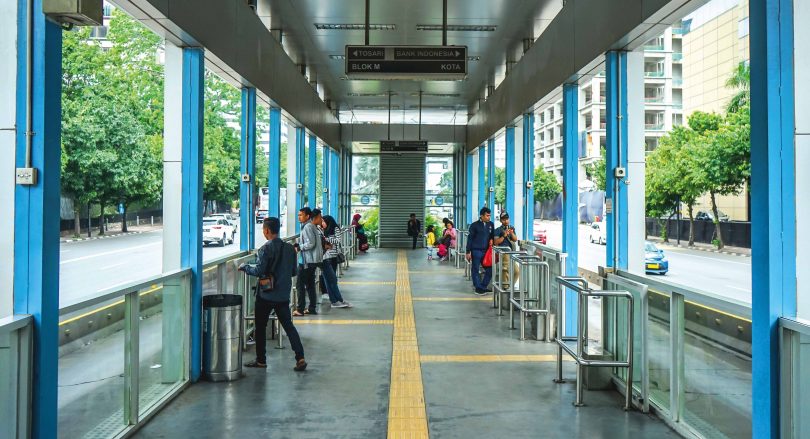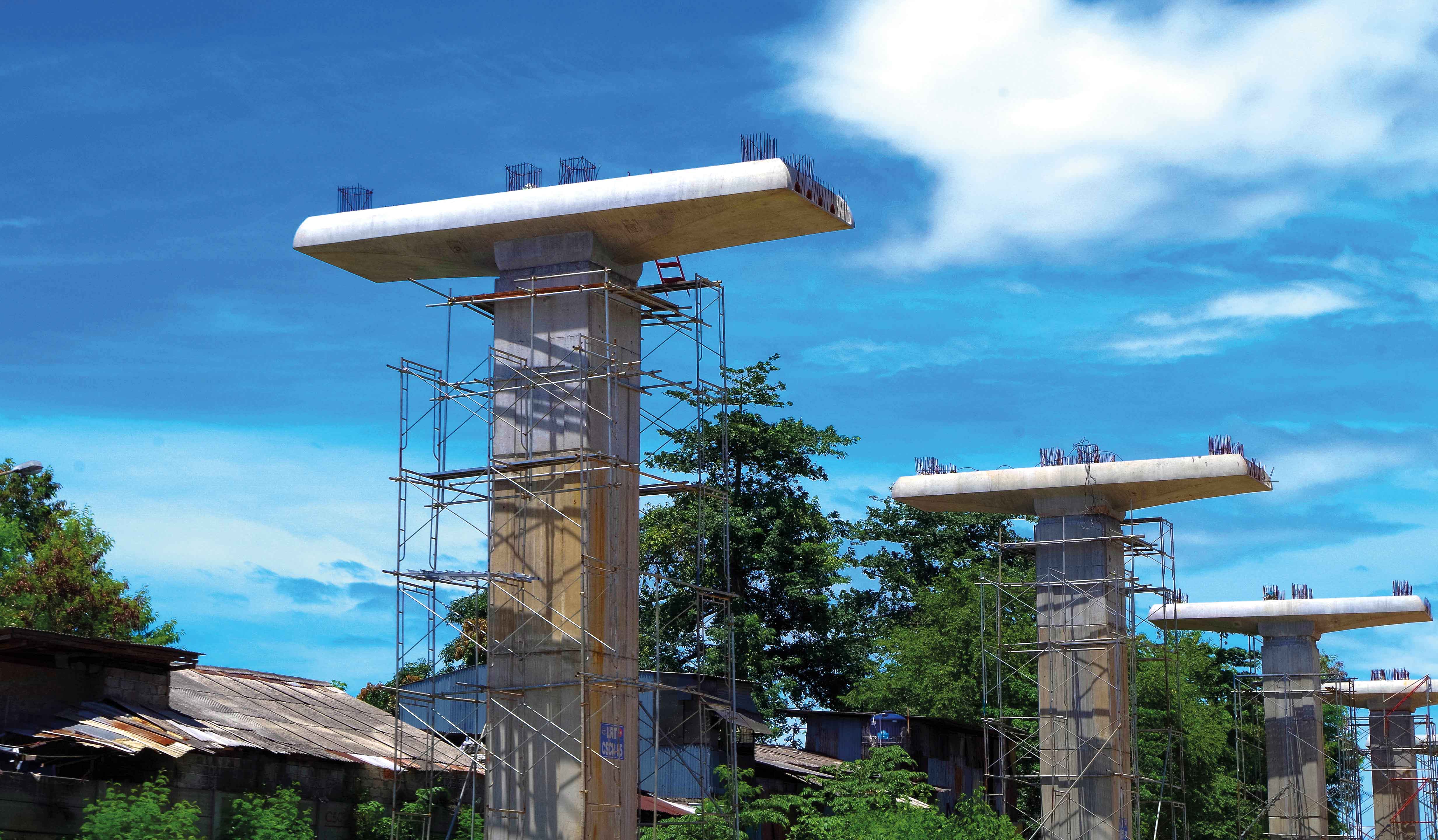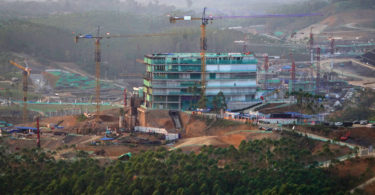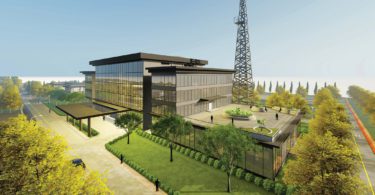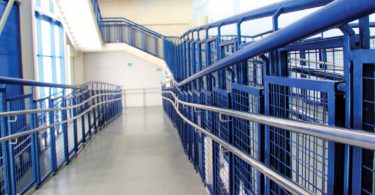The concept of transit-oriented developments (TODs) in urban areas is once again being discussed. In Indonesia, the concept was first introduced by urban designer and architect Peter Calthorpe in 1993 as a solution to the problem of unplanned city development.
Even before Calthorpe¬, public transportation stations have always been at the core of Indonesia’s urban areas. In Jakarta, the Kebayoran Baru district with the Blok M Bus Terminal in the 1950s, and the Planet Senen area that was centered on the Senen Bus Station and Senen Train Station in the 1970s, were planned with the transit stations as their core.
URBAN SPRAWL
The development of big cities in Indonesia over the past 20 years has lead to urban sprawl. The network between the city core and its satellites leads to the formation of a megapolitan, resulting in the emergence of social, economic and environmental problems.
When public transport facilities cannot keep up with the growth in the satellite areas, city life becomes very inefficient and environment quality decreases. The greatest impact felt by megapolitan residents is the increasing commuting time and distance on a daily basis, leading to declining quality of life.
BASIC TOD PRINCIPLES
Implementing the concept of TODs in existing urban areas or in new cities is a good move. Developers often use TODs to promote their new developments. However, there have been a lot of criticisms that the implementation of TODs have not been according to its intentions and principles. A TOD should be a development shaped by the existence of a transit station, not a development just adjacent to a transit station.
A TOD should be a mixed-use area. But today, TODs tend to be more fulfilled by commercial functions and offices. Residential functions and other social and public facilities have not been widely deployed in such developments. Even if there were residences, most would be luxury apartments, which does not fulfil the objective of significantly reducing parking facilities and automobile movement. It is suspected that the government or developers are not yet ready to give up valuable land for the use of affordable dwellings.
In addition, the zoning arrangement of functions within existing TOD areas is still not as well organised as prescribed—commercial functions at the core, offices in the second ring, and residential components in the third ring.
The principle of promoting walking and cycling as a mode of human movement is also not sufficiently facilitated. The provision of bicycle paths, supporting facilities such as benches and bicycle lots, and the fulfilment of safety and comfort standards have not been a priority, not to mention the planning of permeability lines in the area, especially towards the transit stations. Hence, the shift of preference from vehicle mode to walking or cycling mode will be slower.
GREEN OPEN SPACES
The collaboration between green spaces and TODs is known as green TOD. This collaboration will form a synergy that aims to elevate the value of the area quality.
TOD and green open spaces shape outdoor activities and bring life to its surrounding areas. Proper green open space design, with pedestrian and bicycle lane networks, as well as public vehicle lanes, will increase human movement within the area, resulting in a dynamic outdoor lifestyle.
The wider the radius of TOD planning from the transit centre, the more integrated human movement network must be with the green open space. In this case, integrating urban park networks, circulation pathways and inter-building spaces is a good approach. Spaces between buildings can be upgraded from just pedestrian pathways to activity areas. They can be building unifiers, rather than just separators.
Green open spaces will also serve as the accelerator of the place’s active properties. If those places are more widely used as a container of outdoor urban activities, security of those open spaces is easier to achieve.
IMPLEMENTATION
In the context of a crowded, busy and fast-moving city centre, the presence of green open spaces will be a visual relief and can form a city’s image. Borrowing Kevin Lynch’s theory of urban image, green open spaces can serve as paths of movement to transit stations. Green open spaces can also emerge as nodes of the region where the intersection of human movement takes place.
Even for the core areas of TOD, i.e. commercial areas and transit stations, the green open space will strengthen the sense of place. If there are several transit stations, then the connectivity of these green districts needs to be built. Thus, the synergy of the transit station with the surrounding green area will become the generator of the area’s development.
Green TODs also bring environmental benefits. The minimum ratio of land area used as green open space is around 15 per cent. This results in reduced urban heat island effects, increasing outdoor living, boosting the city’s ecosystem, also serving as a storm water garden to support the zero run-off within the area.
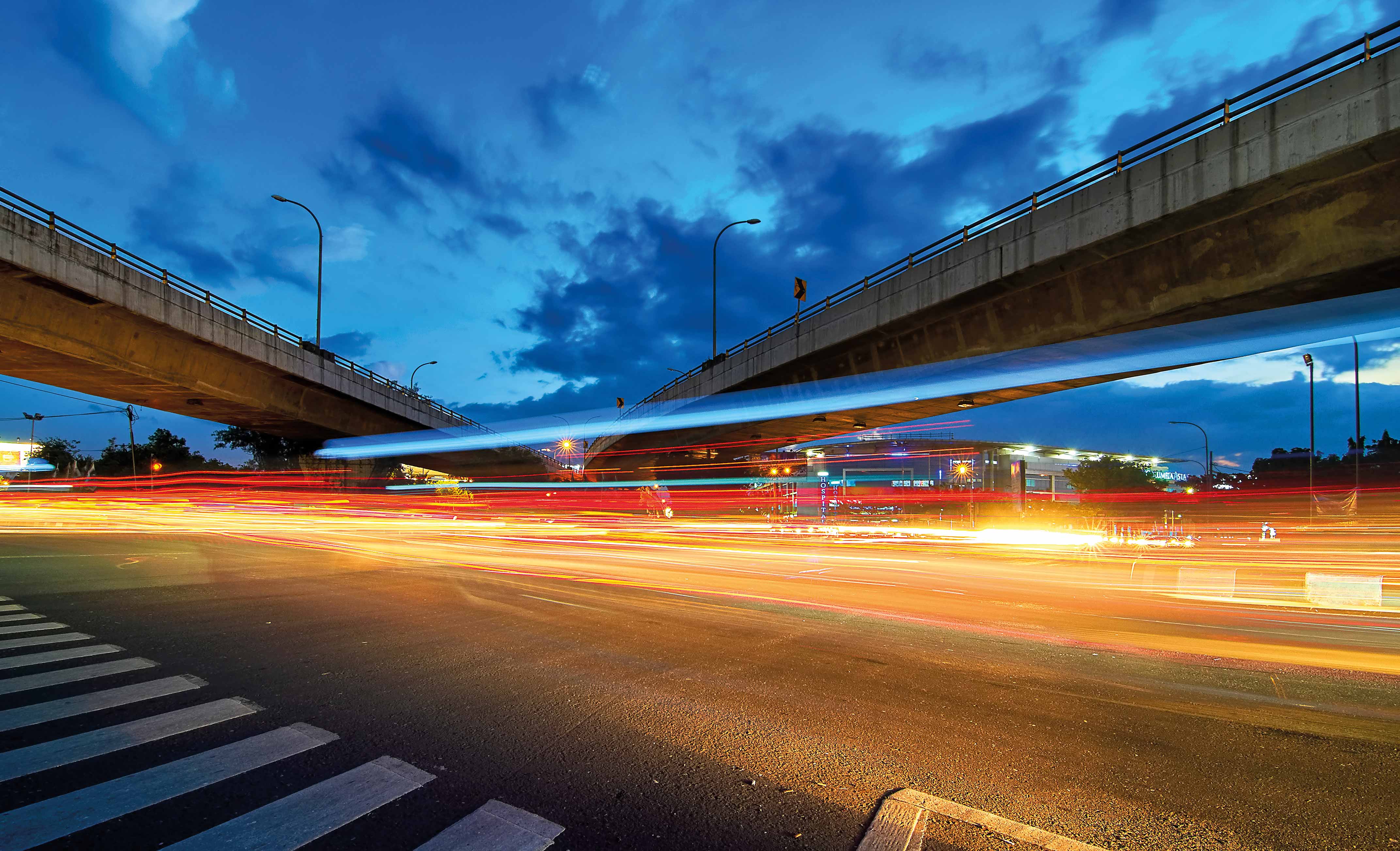
TODs in major cities in Indonesia have potential for development | Photo by Shutterstock/ Martanto Setyo Husodo
The TOD area is divided into several zones based on the density and frequency of bus arrivals or transit trains. These zones are related to the typology of green open space that can be planned there.
There are rules of thumb that can be used in planning the green open space network in the TOD area. The first rule is that every green open space should be within approximately 400 meters or a 5-minute walk. The second rule is that the higher the density of a zone—typically characterised by high rise buildings, high variety of functions and tenants and high frequency of transit modes—the more important for the planned green open spaces to direct pedestrians to the transit stations. These garden paths can be combined with green nodes and should be accessible from all directions.
In the low-density zones with less variety of functions, for example in residential areas with low frequency of transit modes, the green open spaces are directed as pockets of active outdoor lifestyle activities and can be upgraded into urban parks, with the aim of improving the environmental quality, such as supporting the city’s bird habitat or as a water retention area.
CONCLUSION
From the concept and application of green TODs, it can be concluded that the role of green open spaces has a big influence in forming the urban landscape—from making of the human movement process work smoothly, to forming the character and image of the city, and benefiting the environment. The synergy that occurs will improve the city’s quality of life and sustainability. From the perspective of landscape architecture, the existence of green open spaces downtown will improve the visual and spatial quality in the city.
However, applying the TOD concept in one city area is not easy, especially in existing areas. There are several factors that make the application of TODs in urban areas challenging. Besides the land price factor that causes the lack of space for building social facilities, the proper understanding of TOD has not been fully understood by stakeholders. For example, transit stations are often just considered as a city’s facility rather than as the main orientation for development.
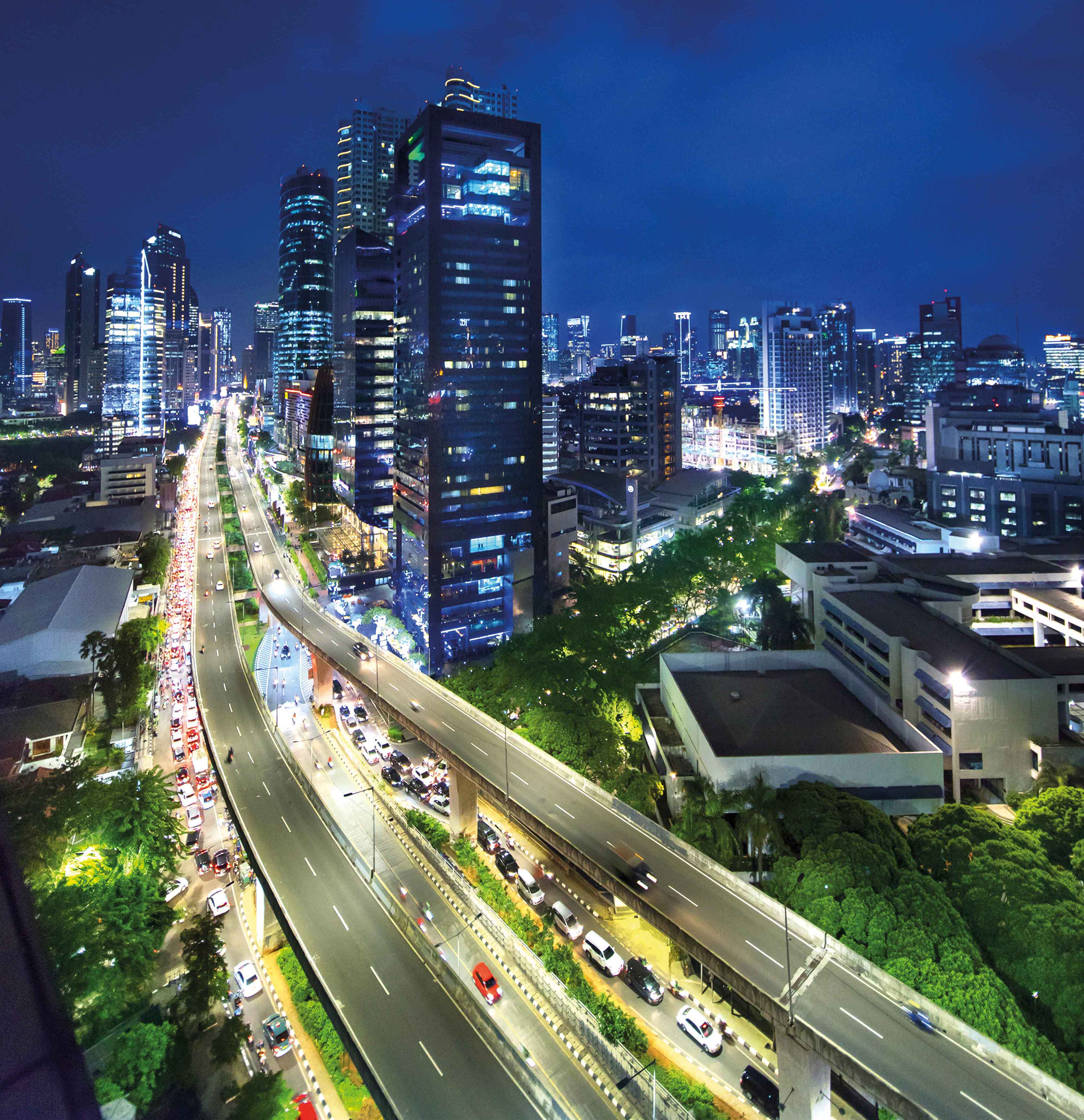
The development of big cities in Indonesia over the past 20 years has lead to urban sprawl | Photo by Shutterstock/ Creativa Images
In addition, policies and regulations on urban area zone are sometimes less supportive to the transit process. The transit-planning paradigm in the area is still a suggestion rather than mandatory. Therefore, it needs strong commitment from stakeholders to prioritise the quality of urban development over short-term economic benefits. The land prices in the city centre need to be controlled to avoid price speculation.
TODs in major cities in Indonesia have potential for development. For the growing new cities, the planning of the TOD area from scratch is necessary to get the desired results. As for Jakarta, which is currently developing MRT transportation modes, the urban zones in area that will have an MRT station can be rearranged together with the pedestrian lines network. In the case of Blok M, for example, it is necessary to redesign the area, such as planning a connecting lane between the existing bus terminal and the MRT station that is integrated with various functions. Thus, the TOD area will have various land use, compact but with structured density, and also high walkability and high placemaking ability.
DONI FIREZA
Architect, lecturer and secretary of Indonesian Society of Landscape Architects DKI Jakarta chapter
Doni Fireza has more than 17 years of professional architecture experience with corporate and private clients. Doni holds a Bachelor of Architecture from Sebelas Maret University, Solo (1998) and a Master of Landscape Architecture from Bandung Institute of Technology (2001).
Doni established his private architectural firm in 2001. With his team, he has designed over 40 projects, including residential, hotel and resort, school and campus, and commercial projects, in Jakarta, Bogor, Bandung, Banda Aceh, Palembang, Manado, Surabaya and Dili, Timor Leste. He is also a member of the Indonesian Institute of Architects (IAI) and Indonesian Society of Landscape Architects (IALI).
Since 2008, Doni has been teaching architecture in university and now serves as a resident lecturer in the architecture programme at Podomoro University, Jakarta. He has spoken at several national and international seminars and conferences, while his interests include history and theory of architecture, religious architecture, heritage conservation, urban landscape and landscape ecology. Doni has published a landscape design book titled “Desain Taman Islami” in 2007.

 Malaysia
Malaysia Hong Kong
Hong Kong Singapore
Singapore Tiếng Việt
Tiếng Việt ประเทศไทย
ประเทศไทย

